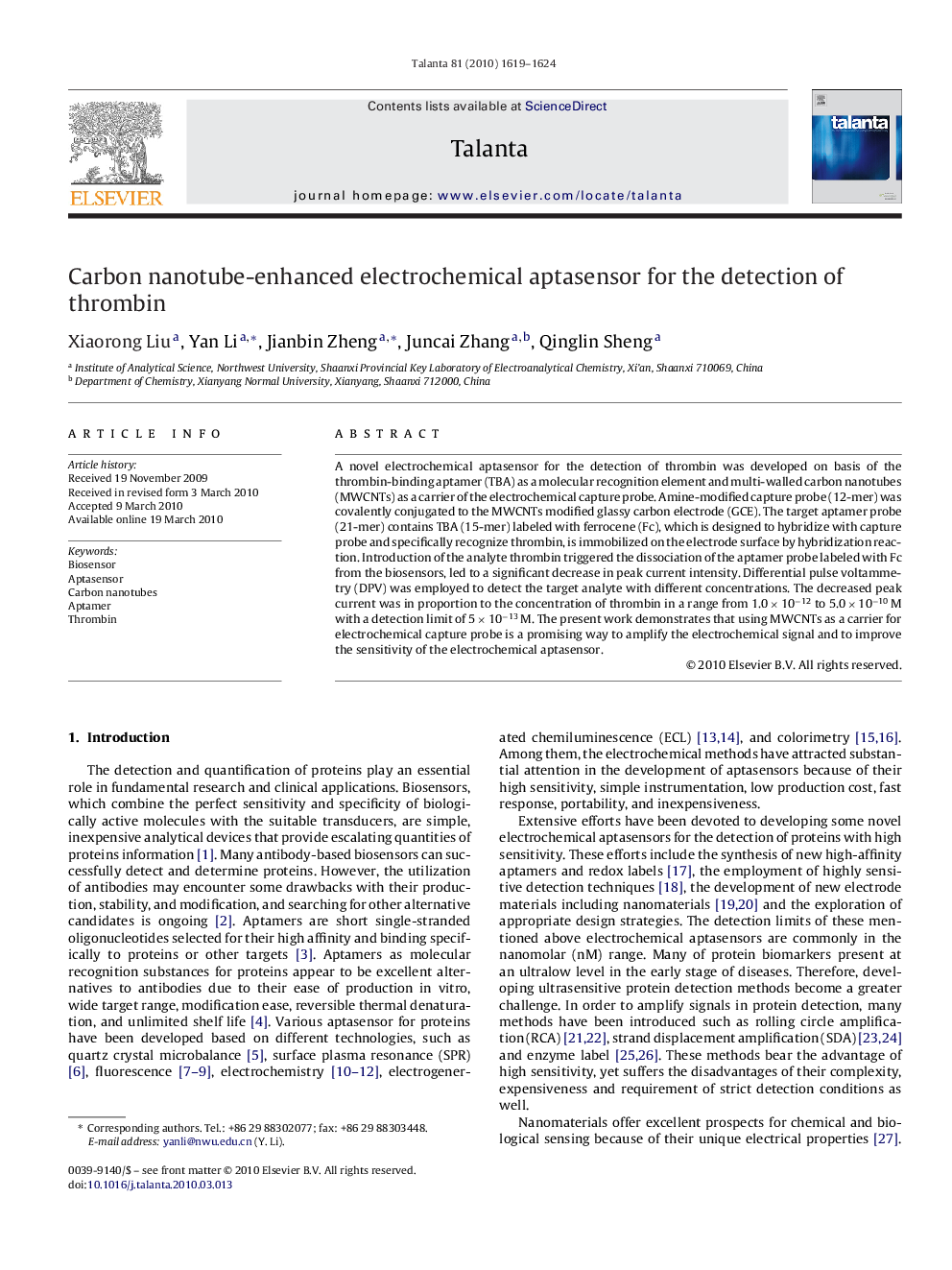| Article ID | Journal | Published Year | Pages | File Type |
|---|---|---|---|---|
| 1242679 | Talanta | 2010 | 6 Pages |
A novel electrochemical aptasensor for the detection of thrombin was developed on basis of the thrombin-binding aptamer (TBA) as a molecular recognition element and multi-walled carbon nanotubes (MWCNTs) as a carrier of the electrochemical capture probe. Amine-modified capture probe (12-mer) was covalently conjugated to the MWCNTs modified glassy carbon electrode (GCE). The target aptamer probe (21-mer) contains TBA (15-mer) labeled with ferrocene (Fc), which is designed to hybridize with capture probe and specifically recognize thrombin, is immobilized on the electrode surface by hybridization reaction. Introduction of the analyte thrombin triggered the dissociation of the aptamer probe labeled with Fc from the biosensors, led to a significant decrease in peak current intensity. Differential pulse voltammetry (DPV) was employed to detect the target analyte with different concentrations. The decreased peak current was in proportion to the concentration of thrombin in a range from 1.0 × 10−12 to 5.0 × 10−10 M with a detection limit of 5 × 10−13 M. The present work demonstrates that using MWCNTs as a carrier for electrochemical capture probe is a promising way to amplify the electrochemical signal and to improve the sensitivity of the electrochemical aptasensor.
